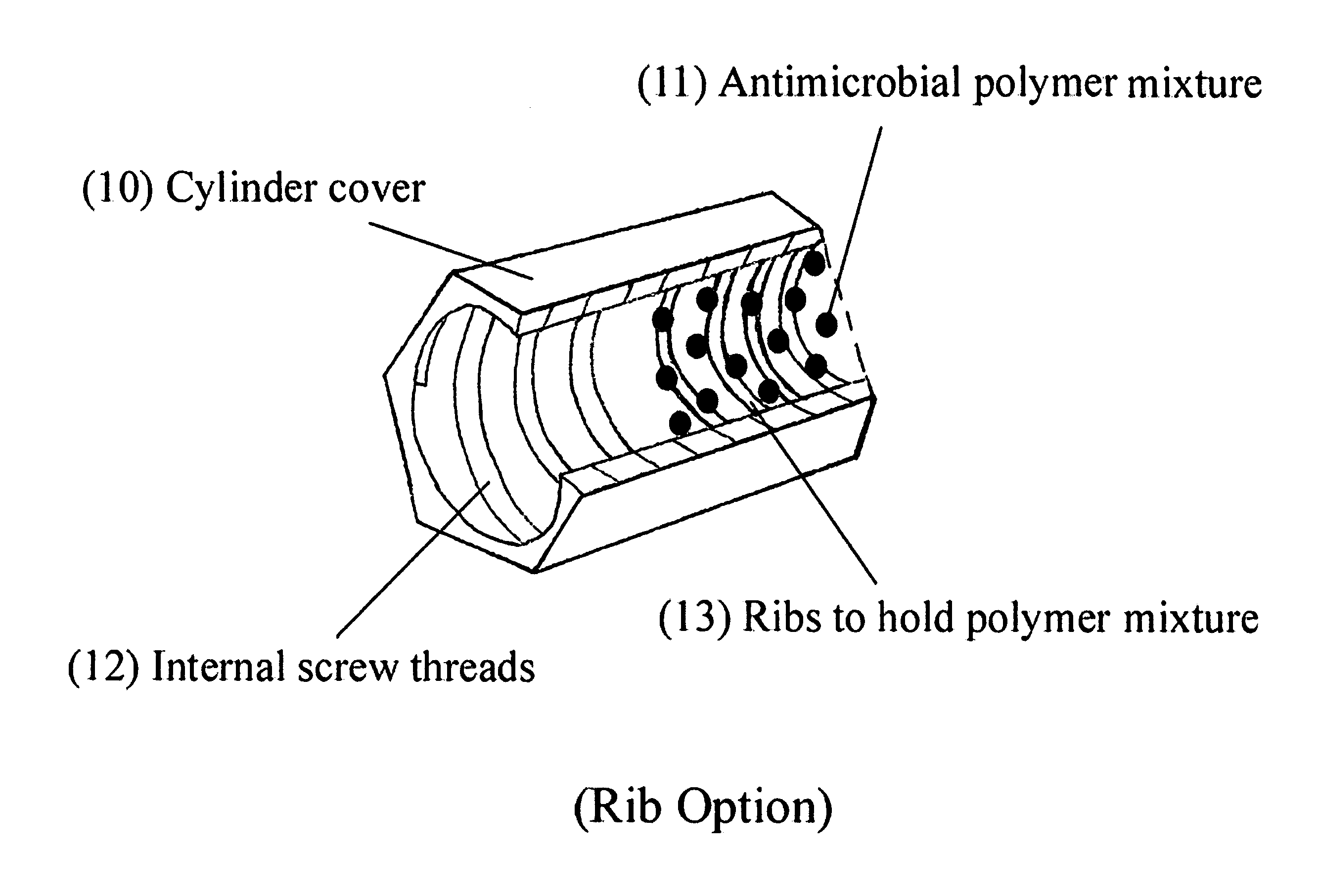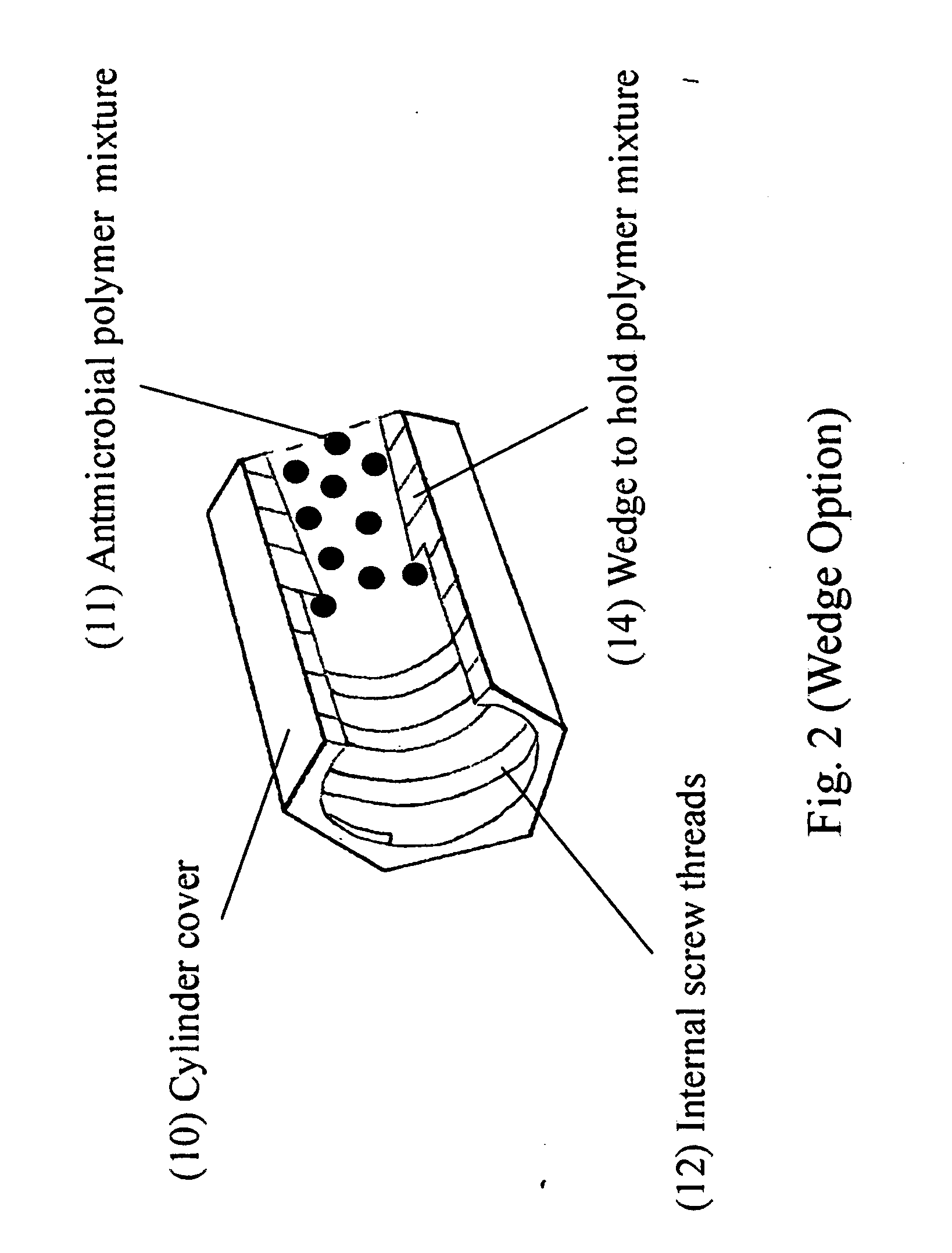Antimicrobial injection port barrier cover
a technology of injection port and barrier cover, which is applied in the direction of medical devices, intravenous devices, medical devices, etc., can solve the problems of achieve the effect of avoiding cost and problems and saving healthcare providers time and materials
- Summary
- Abstract
- Description
- Claims
- Application Information
AI Technical Summary
Benefits of technology
Problems solved by technology
Method used
Image
Examples
Embodiment Construction
[0031]In the preferred embodiment the cylindrical barrier cover of the present invention is made of lightweight rigid non-porous plastic such as polynylon. The cylinder may be of various sizes and lengths.
[0032]The helical screw threads can be of any size that is small enough to allow adequate turn circuits to assure a tight seal when the barrier cover is screwed onto the catheter port. The circumference of the inside of the barrier cover should be slightly larger than the circumference of the screw stem of the port.
[0033]As an optional fastening method of the barrier cover the utilization of a push on barrier cover is a secondary method of securing the barrier covers to the catheter injection port hub. The push on barrier cover also contains antimicrobial polymer mixture on the inside of the barrier cover. The push on cover utilizes a ribbed gripping mechanism to fasten it to the catheter injection port hub. This method is an alternate securing method to the screw on mechanism.
[003...
PUM
 Login to View More
Login to View More Abstract
Description
Claims
Application Information
 Login to View More
Login to View More - R&D
- Intellectual Property
- Life Sciences
- Materials
- Tech Scout
- Unparalleled Data Quality
- Higher Quality Content
- 60% Fewer Hallucinations
Browse by: Latest US Patents, China's latest patents, Technical Efficacy Thesaurus, Application Domain, Technology Topic, Popular Technical Reports.
© 2025 PatSnap. All rights reserved.Legal|Privacy policy|Modern Slavery Act Transparency Statement|Sitemap|About US| Contact US: help@patsnap.com



